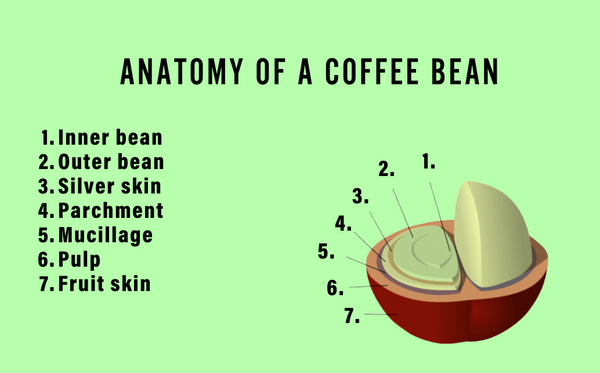FREE next working day delivery on orders over £15
FREE next working day delivery on orders over £15
Believe it or not, but coffee is actually a fruit and coffee beans are not actually beans at all. Rather they are seeds from a coffee cherry. There are different methods when it comes to coffee processing, each involving carefully removing the various layers of the coffee cherry. Here we look at different coffee processing methods and how they influence the overall flavour and characteristics of the coffee.

If you’re someone who loves coffee, especially speciality coffee, you have probably spotted the terms ‘washed coffee’, ‘naturally processed coffee’ or ‘honey processed’ on your coffee bag labels. These are the three most common coffee processing methods. How coffee is processed influences the overall flavour. The main differences between all three methods lie in the treatment of the coffee cherries and the presence of mucilage during drying.
Every coffee farm has a unique processing method and it varies from producer to producer. Processing methods are chosen by the coffee producers based on their available resources, and the method that best showcases the unique flavour profiles of their coffee.
Washed coffee processing, also known as wet processing, produces coffees that are known for their clarity, brightness and complexity of flavour. They’re favourite among speciality coffee drinkers who appreciate the nuanced flavours and aromas that washed coffee processing brings out. By removing the outer layers of the coffee cherry, washed processing allows the natural flavours of the beans to shine through. The result is a clean, bright cup of coffee with a higher acidity.
Unlike the washed method, natural processing is also known as dry coffee processing. This involves drying the whole coffee cherry, including the pulp and the skin, in the sun for several weeks before removing the outer layers. This is often considered the most challenging, riskier and labour-intensive process.
During this drying period, the coffee cherries are dried whole, allowing the beans to absorb the fruit’s sugars. This flavour profile can range from berry and citrus to tropical fruit coffee notes, depending on the variety of coffee and the growing conditions. The resulting coffee is often full-bodied and has a lower acidity than washed coffee.
Honey processing is a hybrid of the washed and natural methods and it doesn’t involve honey. In this method, the coffee cherries are partially stripped of their outer layers, leaving some of the fruit and mucilage which has a sticky, honey-like substance hence the name. The honey coffee process offers various levels of mucilage retention, resulting in different taste profiles, from light and delicate to more intense and fruity flavours.
Over the past few years, coffee producers have been exploring different coffee processing methods such as carbonic maceration, anaerobic and thermal shock, to enhance the complexity and intensity of their coffee. While these techniques are exciting, they can be risky and labour-intensive for producers, and it’s important to consider the impact on them.
Carbonic maceration, which is borrowed from winemaking, involves placing coffee cherries in a sealed container with carbon dioxide. As they ferment in the absence of oxygen, unique fruity flavours are produced.
Similarly, anaerobic processing involves sealing the cherries with very little oxygen, resulting in complex flavours with balanced acidity and sweetness.
Finally, thermal shock is a process of rapidly heating and cooling the cherries, which leads to a distinctive flavour profile.
From natural to washed processing methods, find the right cup of Mozzo for you. Whether you’re a fan of bold, earthy flavours or prefer something more delicate and floral. Explore our coffee selection boxes to find the right cup of coffee for your everyday cup.